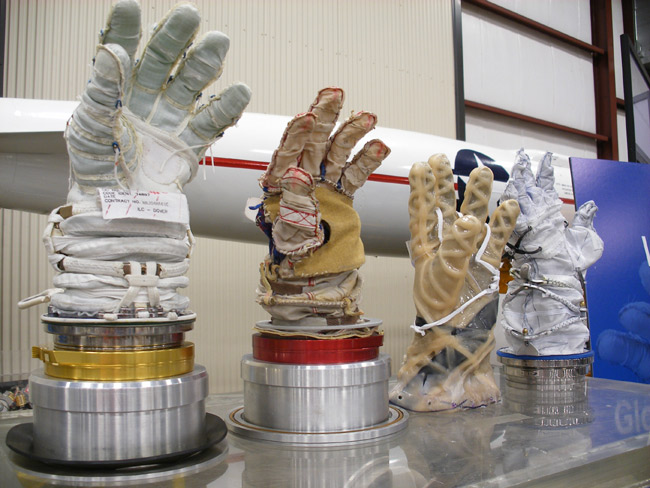Spacesuit Gloves Can Make Astronauts' Fingernails Fall Off

Life as an astronaut involves risks. But who knew thoserisks come even from wearing spacesuit gloves?
A new study found that fingernail injury is a common problemwith astronautgloves, and that spaceflyers with larger hands are more likely to be hurtby their gloves.
Astronaut gloves are designed to protect the hand from thevacuum of space and to resist puncturing from bits of debris that might impactwhile an astronaut is working on a spacewalk. Glove design has had to sacrificesome flexibility for strength. [Graphic:Evolution of the Spacesuit]
The injuries most often result from tight gloves that cutoff blood flow to the fingertips, the study found. But sustained pressure atthe fingertips can cause fingernails to break or, in extreme cases, detach fromtheir nailbeds or fall off entirely.
"It's pretty challenging to design gloves and thespacesuit to keep someone alive in the extreme environment of space,"said study co-author Dava Newman, a professor of astronautics at MIT.
"It shows you there's still room for improvement infuture designs," she told SPACE.com.
The study looked at data from 232 NASA astronauts, and foundthat 22 of them (about 10 percent) incurred "fingernail trauma" whilewearing spacesuit gloves.
Breaking space news, the latest updates on rocket launches, skywatching events and more!
The results will be detailed in the October issue of thejournal Aviation, Space, and Environmental Medicine.
The researchers analyzed 22 different measurements of thehand, such as hand circumference and finger-to-hand size ratio. They found asignificant correlation between hand circumference and injury rates.
In particular, male astronauts with a hand circumferencelarger than 9 inches (23 cm) have a 19.6 percent probability of fingernailinjury, while crewmembers with hands smaller than that have only a 5.6 percentchance of injury, the study found.
The larger the hand, the more restrictive the gloves seem tobe. In particular, the current gloves offer very limited movement in the hand'smetacarpal joint, which allows the hand to bend the fingers over the palm.
"The gloves are preventing the natural movement,"Newman said. "It does suggest for advancedglove design, we really want to pay more attention to that metacarpaljoint. We really want to give the hand as much flexibility as you canget."

Clara Moskowitz is a science and space writer who joined the Space.com team in 2008 and served as Assistant Managing Editor from 2011 to 2013. Clara has a bachelor's degree in astronomy and physics from Wesleyan University, and a graduate certificate in science writing from the University of California, Santa Cruz. She covers everything from astronomy to human spaceflight and once aced a NASTAR suborbital spaceflight training program for space missions. Clara is currently Associate Editor of Scientific American. To see her latest project is, follow Clara on Twitter.
